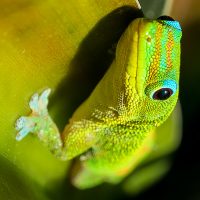There are not a lot of native lenses found in the Canon EF-M series, but this is changing with a number of new offerings. There is a new 18-150mm general purpose zoom that looks pretty good. The new lenses include a rather specialized lens, the EF-M 28mm f/3.5 Macro IS STM, a purpose built macro lens.

This lens is different. The lens is designed from the start to be a macro lens, not a general purpose lens that also does a little macro as a secondary feature. There are a number of features that are quite unusual found on this macro lens.
The first, and most obvious feature is the built-in ring light, a rather useful feature in very close macro photography where light is everything. A set of bright white LEDs is arranged on the front of the lens behind a diffuser. The LED’s are powered by the camera, no separate battery is necessary.
It is not really a full ring, rather a 90 degree arc to either side of the lens aperture. In practice the side and side arrangement can provide a more natural look than a complete ring, leaving a little shadow top and bottom to allow the subject some relief.
The ring light is activated with a button also on the side of the lens. It has three modes… Off, high, and low, toggling through in that order as the button is pressed. The light will activate as long as the lens is extended and the camera is on.
The color correction of the white LED’s seems quite good, fairly close to daylight. Shooting with the ring light outdoors, with a mix of ring light and sunlight illuminating the subject and scene there is no notable color difference between the two.

One of the most unusual features of the lens is the need to extend the barrel prior to use. This is accomplished by releasing the small latch on the side of the lens and rotating the body. There are three detents for this latch… the stowed, normal use, and super macro positions.
If you do not unstow the lens a message appears on the camera LCD display. This message is rather cryptic, when you first read it there is no indications it has anything to do with the lens.
The other unusual feature of the lens is the filter thread setup. Due to the construction of the barrel extension there are no threads for a standard filter. Rather a set of male threads is found on the outside of the barrel extension. There is an adapter supplied with the lens that converts these threads to a standard 43mm filter, this adapter does however block the ring light. Just as well, as internal reflections would probably be present if the ring light was used with a filter in front.

The lens retails for about $300, fairly typical for most of the EF-M lenses that list from $250 to $500. The EF-M lenses are now widely available, a notable change from years past. A couple years back I walked into a major camera store with the M3 and met blank stares when asking about lenses in stock. They kept confusing the EF-M with Leica M-mount.

Using the lens you find out just how these unusual features work in the real world of photography… The need to unstow the lens is a bit annoying at first, often forgotten as you try to get the photo.
The ring light works as one would hope, adding critical light to those very close macro shots. It is only useful within a few inches of the lens, but beyond that you should have enough ambient light for most subjects.
The lens is sharp, really sharp. Up close and personal is where the 28mm Marco is really designed to operate. Get close to your target and you can expect to see detail that a general purpose lens will just miss. The example shown here is a tight crop of the same photo found above, from over a foot away you can make out small specks of dust on the gekoes’ eye. The lens makes use of every bit of the resolution offered by the camera sensor.

In use the lens operates very smoothly. At moderately close ranges, under a foot to a few inches, it just works, shoot and focus very quickly, even on fast moving targets like our household geckoes. Get closer and you face the usual challenges of macro photography, shallow depth of field and lack of light. The lens helps here, but is no magic bullet that solves the limitations of physics.
This 28mm f/3.5 Macro is an interesting lens with a few quirks. Clearly a specialized lens meant for macro photography and perhaps a little general purpose shooting. It has a very useful up-close focal range and within that range it is very, very sharp. The ring light is a truly useful feature. Certainly not the first EF-M lens you need to buy, but if expect to shoot small things this lens is an excellent bit of kit.











Have you used the M5 for astrophotography?
Actually I have not, keep meaning to do so. Will probably write it up when I do.
Hi Andrew-
Always a fan of macro! You don’t mention focus-stacking and is really great for extending the depth of focus! And yes, while you CAN stop down to increase depth-of-field a little, as I demonstrated and you note briefly, physics (diffraction) kills you! See:
https://1.bp.blogspot.com/-V4FpKfyBfy8/VvSwP3M_fFI/AAAAAAAANCc/MC0xGJWQz6wCBQxKfuRZzdwZBgbpHaaBQ/s1600/20_March_Diffraction_Comparison.jpg
And the original blog post here:
http://theketelsens.blogspot.com/2016/03/springtime-with-vengance.html
Focus stacking literally takes a couple minutes in Photoshop when doing a dozen to eighteen frames, and there are also specialized programs (Zerene is recommended but I’ve never used it for about $100).
While waiting for Photoshop to do its thing, it has literally taken my breath away at the job it does sometimes. It is certainly a skill that can be put to good work in macro applications!
-Dean